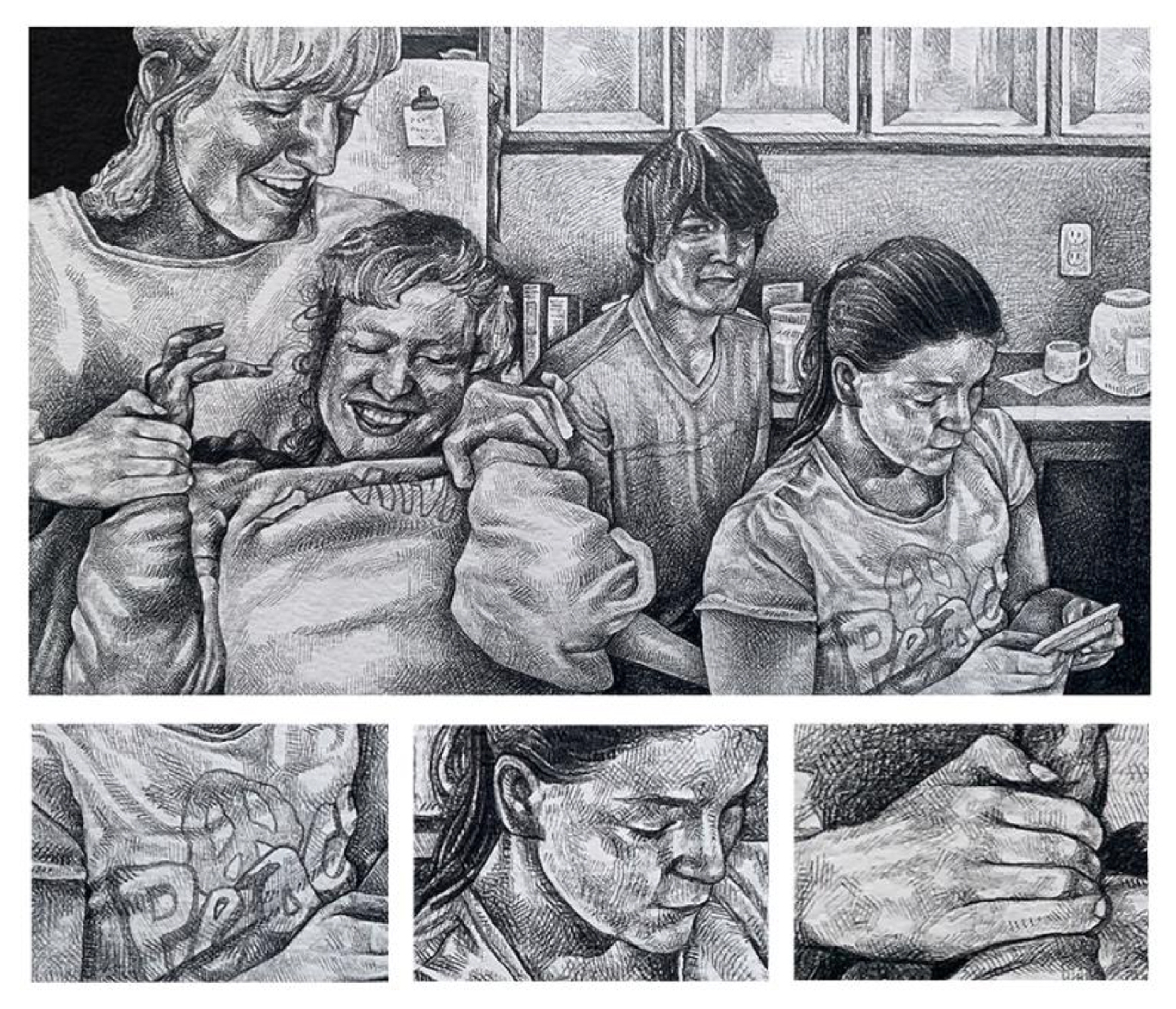AP Art of the Week
Spotlight on Artist Hunter Ruiz
Welcome to The Elective’s digital art museum, dedicated to the incredible work of AP Arts students. This week we feature a drawing made by Hunter Ruiz from LoveJoy High school in Lucas, Texas.
Welcome to The Elective’s digital art museum, dedicated to the incredible work of AP Arts students. Each week we highlight a work or series created in one of the AP Arts concentrations—AP 2-D Art and Design, 3-D Art and Design, and AP Drawing (the AP Program also offers Art History and Music Theory)—as well as a statement from the artist (and, occasionally, their teacher).
From the first cave paintings to contemporary breakthroughs in virtually reality, art, in all its forms, has been a crucial way for people to process, make sense of, comment on, and grapple with the world around them. In 2020, there is a lot to process and grapple with—and AP Art students have risen to the challenge. The work many of them submitted in their final portfolios is explicitly of the moment, from commentary on the covid-19 pandemic to the celebration of people of color to the nature of heroism in perilous times.
The work is often challenging and provocative but always insightful, inspiring, and expansive.
This week we feature a drawing made by Hunter Ruiz from LoveJoy High school in Lucas, Texas.

Here’s Hunter’s statement on the work:
“Within my body of work, I investigate how synthesis is recognized between family members. The traditional style of portraiture within 'Mama & Papa' and 'Take Two' represents my parents’ hierarchy and almost royalty within my home, whereas their expression suggests their own normalcy/humanity. I used the contrast of the portraiture and their physical appearance to make a mockery of these 'family roles' that society has deemed normal and sought after, further pushing my investigation of the appearance of a conventional family. Between controlled, repetitive cross-hatching of graphite and loose, saturated applications of oil paint, each composition alludes to a representation of 'family' as a societal construct.

“What began as exaggerated narratives mocking my parents transitioned into illustrative juxtapositions of family photos. With each memory-based composition, I pulled from family images to build made up relationships that symbolize a dignified family. Both positive and negative relationships within the renderings further this manifestation of a warped space. Later in the work, I further my creation of false yet realistic families by experimenting with a change in materials as well as the amount of control I had over my renderings. Underpaintings that held anecdotes were taken away from the viewer via gesso; Thus stripping the viewer from understanding the dynamic between the figures, much like my own inquiry into how a family should function. Increasing scale and painting my invented photographs ends my body, concluding that turmoil and synthesis can coexist within the social constructs that make up a family.”
And here are a few more images from Hunter’s portfolio:

Recreation of family photo through the layering of oil paint on an acrylic underpainting

Collage of juxtaposed family images made to create memory-based composition then drawn via graphite

Collage of juxtaposed family images made to create memory-based composition then drawn via graphite

Juxtaposed portraiture from family photographs painted via oil paint, applied to loose underpainting. Layered oil paints and hidden glyphs narrate an inquiry into familial relationships and unity.
Student statements are lightly edited for length and clarity.


